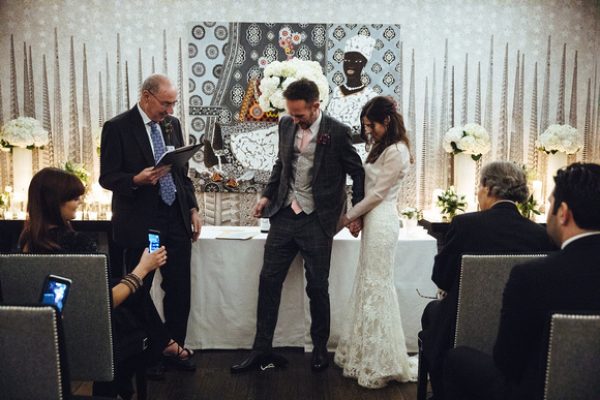As a celebrant, I obviously officiate at many types of ceremony. Some are quite conventional; others, less so. Some include ritual, while many do not.
Rituals are too numerous to list (and originate from a whole variety of cultures). No selection is going to be anything like exhaustive. I therefore ask your indulgence, when I focus on a few that have been particularly popular with my clients.
Trampling a Glass
A popular way to end a ceremony (pictured) is for the groom (usually) to tread a glass underfoot. This comes from Jewish tradition. It actually has a number of different interpretations. The most common one is the idea that breaking the glass brings good luck.
Loving Cup (Quaich)
From the Celtic tradition, a goblet is shared by the couple. They usually – but not exclusively – drink wine. They may well have three toasts – one to the past, the second to the present, and the third to the future.
Sand Ceremony
This is a lovely ceremony and can be performed by the couple alone. The origin is pagan. It signifies the joining together of two families.
Sand of one colour is poured by one member of one family into a receptacle; sand of another colour is then poured into the same receptacle. Appropriate words from the celebrant can accompany this act.
A full handfasting can last a long time, depending on the blessings to be incorporated. However, there is a much shorter – but lovely – version available.
This involves the couple using ribbons or cords (their choice), and the celebrant tying their wrists together (often in a figure-of-eight knot).
The ritual goes back to Celtic times, although here too there are various different versions. One, at least, related to a peasant wedding conducted by the village blacksmith.
This is only a taster of what could be available. Rituals offer a huge amount. They are often beautiful in their own right, may be humorous, but are always intriguing, and most have immense spiritual value.
I’d be happy to discuss these (or other) rituals at your leisure.
photo: www.lyndseygoddard.com

